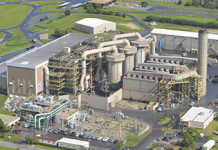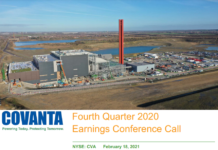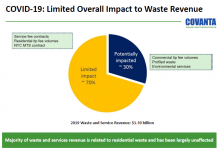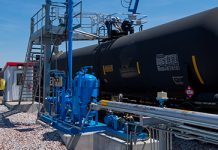Debra Fiakas, CFA
 |
| The Waste Hierarchy, with energy from waste highlighted |
In the last post “Covanta on a Mission to Up-cycle Municipal Waste,” I noted that even a group of experts advising Covanta Holding (CVA: NYSE), has some concerns about the wisdom of channeling municipal waste through mass burn facilities like those of Covanta. Recycling and reuse are considered even higher uses for municipal waste that result in net lower toxic emissions and net higher energy savings or energy generation. For example, a report published by the European Union and entitled Waste Management Options and Climate Change notes that sorting municipal waste at the source and then recycling offers the lowest net greenhouse gases. Only when compared to coal-fired power generation are mass-burn facilities on par with recycling in terms of greenhouse gas savings.
Let me first concede this point before moving on to look at Covanta’s investment in plant capacity. However, I would also like to add the thought that if the waste is not getting recycled anyway, it makes sense to use the waste for electricity and steam generation, especially with the metals recovery that Covanta achieves.
Covanta has not published an average cost per facility, but a review of the company’s most recent construction projects suggests a wide range of costs. For example, an energy-from-waste (EfW) project in Ontario, Canada referred to as the Durham-York project is expected to process 140,000 tons of waste per year. The price tag for the project is estimated at about $250 million based on current exchange rates, implying a cost of $1,786 per ton on an annual basis.
Another project currently underway is the expansion of an EfW facility in Honolulu that will increase tonnage capacity by 900,000 tons per day. The expansion is expected to require $302 million, implying a cost of $918 per ton. Granted the Durham-York and Honolulu projects are not comparable since the Honolulu expansion capitalizes on infrastructure already in place.
The cost burden for an EfW facility does not necessarily fall exclusively on Covanta’s shoulders. That is because the company has a variety of relationships with local communities, which leads in some cases to Covanta operating an EfW facility owned a local entity such as a municipality or special services agency. When Covanta builds a facility that it will simply operate on behalf of a local entity, the construction project ends up in Covanta’s top-line as revenue.
For its own portfolio of owned-facilities Covanta invested $143 million in facility construction in 2011 – a significant increase over the $101 million in 2010 and $27 million in 2009. Additionally, Covanta invested $307 million in maintenance and enhancement projects over the last three years. During the year-end 2011 earnings conference call management outlined an investment budget for 2012 of $50 million for growth projects and another $80 million to $90 million for maintenance capital spending.
Property, plant and equipment on the books at the end of March 2012 totaled $2.4 billion. Any investor in CVA has to wonder whether fixed assets values are secure given the view that mass burn for electricity is not the highest and best use for municipal waste. Even with Covanta’s kicker of recovering metals, it seems like a significant increase in reuse and recycling would cut into both the volume and quality of the EfW feedstock stream Covanta depends upon. Just how long will Covanta’s facilities be economically viable? This might be the X factor in Covanta’s capital budget.
Covanta has been relying upon fixed fee and put-or-pay provisions in their operating contracts to protect the company from volume and cost risks. The company recently lost a contract to operate a facility in Hartford, Connecticut because the Hartford community wanted a cost-plus-fee contract arrangement. Covanta appears to have simply let the relationship go to a competitor to avoid the risks a cost-plus-fee contract might entail – letting go at the same time to a 100% contract renewal track record. The put-or-pay provisions may be as important in the coming years as more pressure is put upon communities to promote “reduction, reuse and recycling.”
This article is part three of a three part series. Here are part one and part two.
Neither the author of the Small Cap Strategist web log, Crystal Equity Research nor its affiliates have a beneficial interest in the companies mentioned herein. CVA is included in Crystal Equity Research’s Beach Boys Index in the Waste-to-Energy Group.
Debra Fiakas, CFA is the Managing Director of Crystal Equity Research, an alternative research resource on small capitalization companies in selected industries.







